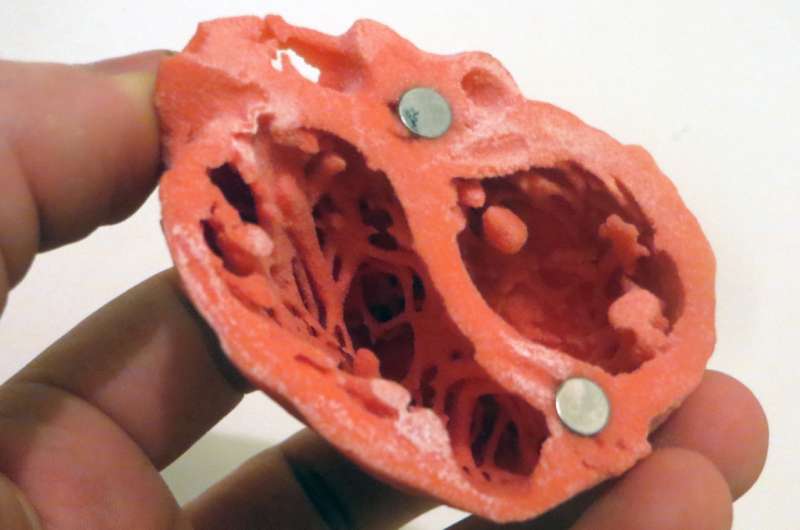3D Model of the heart by Dr. Matthew Bramlet. Credit: NIH
Close to 20% of elderly adults who have suffered a heart attack will be readmitted to the hospital within 30 days. Performance on a simple mobility test is the best predictor of whether an elderly heart attack patient will be readmitted, a Yale-led study reports.
Appearing in Circulation: Cardiovascular Quality and Outcomes, the study describes the first risk model for hospital readmission specifically developed for older heart attack patients. Hospital readmissions are costly and detrimental to patient health, so an applicable risk model can inform efforts to avert early readmissions, say the researchers.
A free version of their risk model is now available online, and an app-based version will be available soon.
"Clinicians have often relied on their 'clinical intuition' to incorporate patients' functional impairments into prognosis," said Sarwat Chaudhry, M.D., principal investigator and associate professor of medicine at Yale. "Our model gives clinicians an objective risk model that they can use to incorporate information about functional impairments to judge risk for adverse outcomes after hospitalization for heart attack."
Given the aging of the population, there has been growing interest in the role of functional impairments—including in muscle strength, walking, memory, vision, and hearing—in determining the prognosis for patients after major events such as heart attacks, explained Chaudhry. Previous risk models hadn't considered these functional impairments, as they aren't generally available in registries and trials.
In this study, mobility was assessed using the Timed Up and Go (TUG) test, which involves timing patients as they stand up from a seated position and then walk 10 feet. The TUG test is ideal for capturing functional mobility because it combines several basic mobility skills and can be performed in a small space with limited equipment, said the researchers. They found that patients who took more than 25 seconds on their TUG test were nearly twice as likely to be readmitted after a heart attack than those who completed it in less than 15 seconds.
"When older patients are being discharged from the hospital after having a heart attack, it's important to consider and address mobility impairments," said Chaudhry. "We can measure this quite easily—and we should. Mobility impairment provides important prognostic information on top of the clinical indicators we've traditionally relied on."
Other strong predictors of readmission within 30 days were prior chronic lung disease, arrhythmias, and acute kidney injuries. This data came from the sample collected for the larger SILVER-Acute Myocardial Infarction (AMI) study, a comprehensive evaluation of older adults with heart attacks. Future studies from the SILVER-AMI data will provide information about mortality, falls, and quality of life in this population, noted Chaudhry.
More information: John A. Dodson et al, Thirty-Day Readmission Risk Model for Older Adults Hospitalized With Acute Myocardial Infarction, Circulation: Cardiovascular Quality and Outcomes (2019). DOI: 10.1161/CIRCOUTCOMES.118.005320
Journal information: Circulation: Cardiovascular Quality and Outcomes
Provided by Yale University























